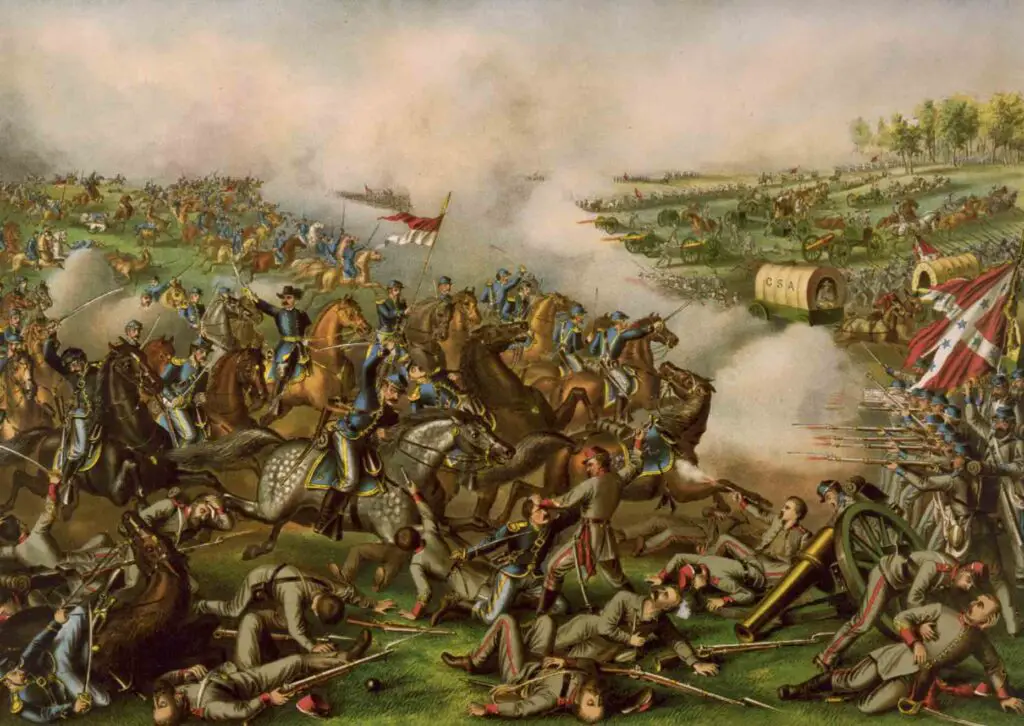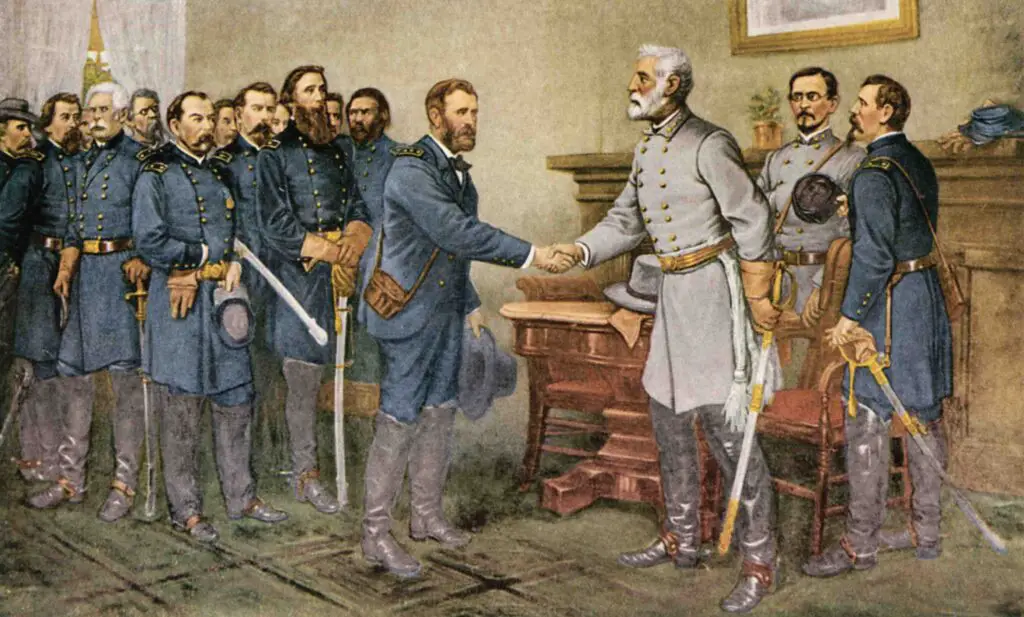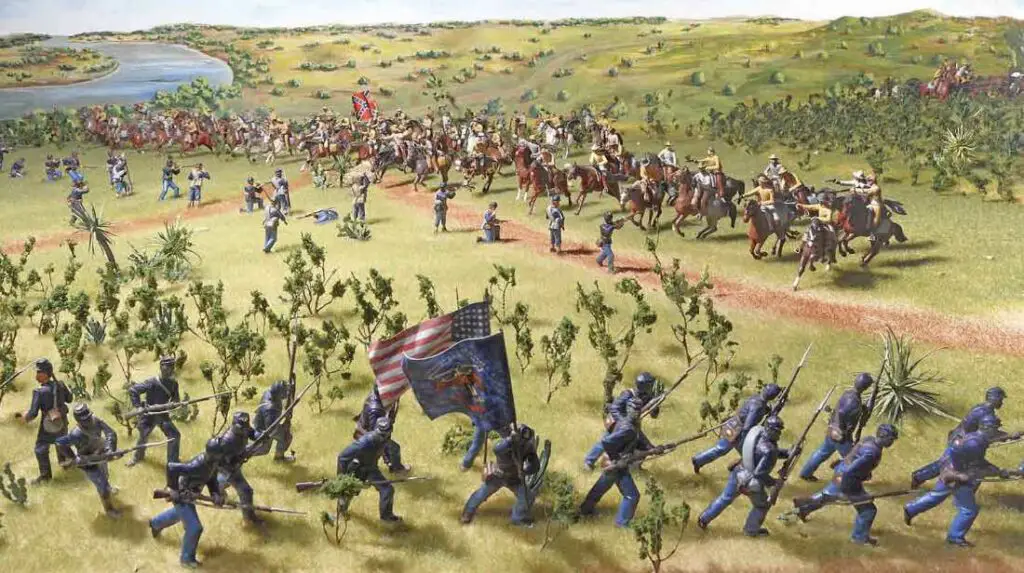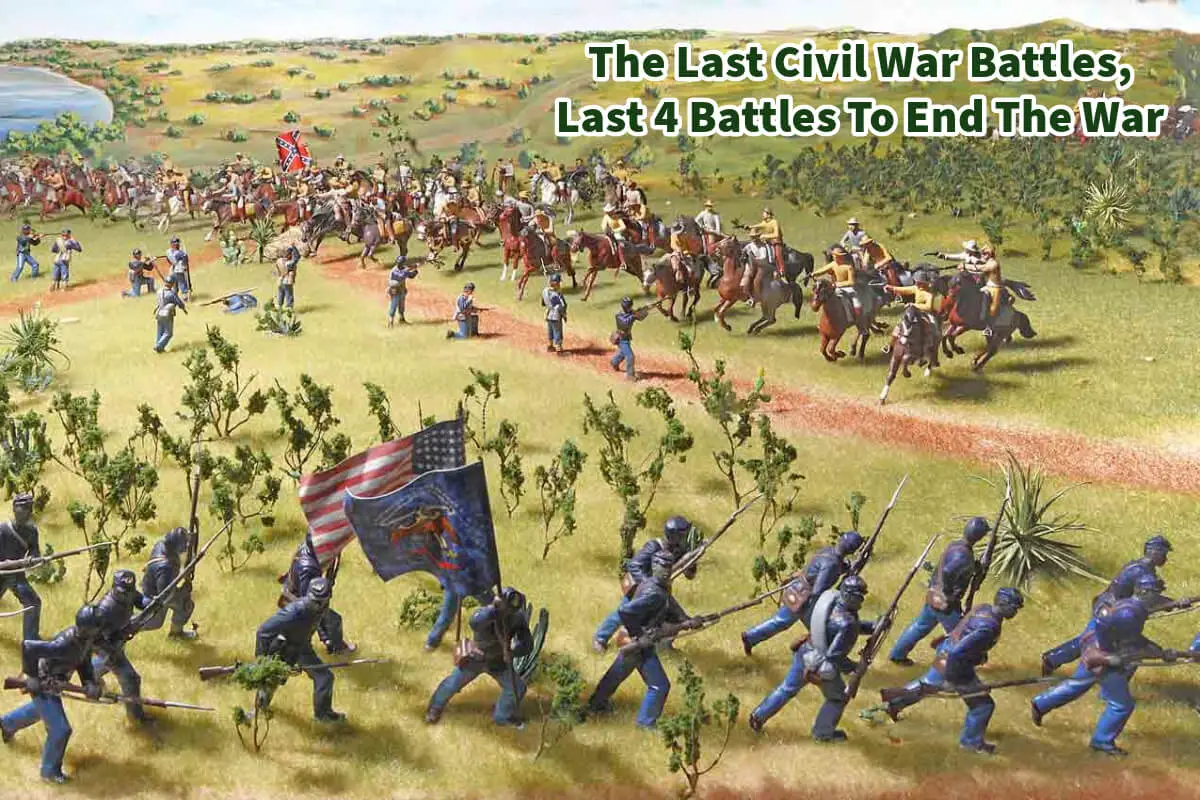The American Civil War was pivotal in U.S. history, marked by a stark division between the Confederate and Union states. This period was characterized by intense combat and significant loss of life.
While the Battle of Palmito Ranch in Texas in 1865 is commonly recognized as the war’s final military engagement, three other crucial battles preceded it. Read more as we delve into the significance and context of these last four battles of the Civil War and why they are significant.
Table of Contents
- The Last Four Battles Of The Civil War: A Closer Look At How The War Ended
- The Civil War’s Conclusion: A Reflection
- Related Questions
The Last Four Battles Of The Civil War: A Closer Look At How The War Ended
The American Civil War fought between 1861 and 1865, was a monumental conflict that forever altered the course of American history. While the war had many battles that determined the ebb and flow of power, the final clashes were particularly significant as they brought the nation closer to unity after years of devastating warfare.
The last four significant battles—Appomattox Station, Appomattox Court House, Fort Blakeley, and Palmito Ranch—illuminate examples of the warfare, strategies, and politics that characterized the war’s final days.
April 8, 1865: Battle Of Appomattox Station, Virginia

Background
The Battle of Appomattox Station occurred in Virginia and was a precursor to the much more famous Battle of Appomattox Court House. Confederate General Robert E. Lee was desperately bidding to resupply his army, and Union forces were keen to prevent this.
The Battle Of Appomattox Station
Union cavalry under General George Armstrong Custer captured three Confederate supply trains at the station, crippling Lee’s army. This battle made it clear that the Confederate Army was running on fumes and set the stage for the next day’s events.
Impact Of The Battle Of Appomattox Station
This battle might be viewed as the beginning of the end for the Confederate forces. Running low on food, ammunition, and morale, it became clear that Lee would have a hard time fighting for much longer, let alone succeeding in linking up with other Confederate forces in North Carolina as he had planned.
April 9, 1865: Battle Of Appomattox Court House, Virginia

Background
This is perhaps the most well-known of the final battles and is usually cited as the conflict that effectively ended the war. Lee’s army was surrounded and low on supplies after failing to break through Union lines during the previous days.
The Battle Of Appomattox Court House
The Confederate Army was surrounded and vastly outnumbered. Realizing the hopelessness of the situation, Lee decided to meet with Union General Ulysses S. Grant to discuss the terms of surrender.
Impact Of Battle Of Appomattox Court House
The surrender at Appomattox Court House is symbolic of the overall Confederate surrender. This event signaled to both armies and the general populace that the war was effectively over.
A clear Union victory provided a much-needed sense of closure to a war-weary nation.
April 9, 1865: Battle Of Fort Blakeley, Alabama

Background
On the same day as the Battle of Appomattox Court House, the Battle of Fort Blakeley was almost eclipsed by the surrender in Virginia. This battle was part of the Mobile Campaign to capture the last Confederate port on the Gulf of Mexico.
The Battle Of Fort Blakeley
Union forces led by General Edward Canby engaged the Confederate troops fortified at Fort Blakeley. The Union troops significantly outnumbered the Confederate forces and captured the fort using overwhelming firepower and workforce.
Impact Of The Battle Of Fort Blakeley
The capture of Fort Blakeley was vital in closing off the last Confederate port, further impeding the South’s ability to continue the war. It was a significant but largely overlooked Union victory.
May 12-13, 1865: Battle Of Palmito Ranch, Texas

Background
The Battle of Palmito Ranch is perhaps the most peculiar among these final battles, mainly because it occurred more than a month after Lee’s surrender at Appomattox. News traveled slowly, and not everyone knew that the war had ended.
The Battle Of Palmito Ranch
Fought near Brownsville, Texas, the engagement involved a few hundred men on both sides. Surprisingly, the battle was a Confederate victory, led by Colonel John S. “Rip” Ford. Union forces retreated, with relatively few casualties compared to other battles.
Impact Of The Battle Of Palmito Ranch
Although it was a Confederate victory, the battle was inconsequential to the war’s outcome. By this point, most Confederate armies had already surrendered, and the Confederate government had collapsed. Palmito Ranch is a bizarre epilogue to the Civil War, representing the disconnect and lag in communication during that era.
The Civil War’s Conclusion: A Reflection
The last four battles of the Civil War served as a dramatic closing chapter to one of the darkest periods in American history.
While the Battle of Appomattox Court House is rightly seen as the war’s symbolic end, the other battles contribute to our understanding of how and why the war reached its ultimate conclusion.
Whether through crippling an already struggling army, closing off crucial supply ports, or showcasing the lag in communication, these battles collectively provide insight into a complex, tragic, and transformational war.
These final military actions paved the way for the Reconstruction era and the long, ongoing struggle for true equality and unity in the United States.
At A Bus On A Dusty Road, we talk about travel, life, and ex-pat living. We are all about “Living Life As A Global Citizen.” We explore social, cultural, and economic issues and travel.
We would love to have you be part of our community. Sign up for our newsletter to keep up-to-date by clicking here. If you have any questions, you can contact me, Anita, by clicking here.
Listen to our Podcast called Dusty Roads. You can find it on all major podcast platforms. Try out listening to one of our podcasts by clicking here.
Subscribe to our A Bus On A Dusty Road YouTube Channel with great videos and information by clicking here.
Related Questions
Is It True America Is Both Capitalist And Socialist?
America is considered both a capitalist and socialist economy; America is deemed to have a mixed economy which means it has both capitalist and socialist characteristics. Having a mixed economy in America is essential because there are some things that we need the government to intervene with on behalf of the public good.
By clicking here, you can discover Is It True America Is Both Capitalist And Socialist?.
What Makes Confederates Different From American Colonists?
The American colonist was primarily English, Dutch, and French settlers who arrived in the American colonies beginning in 1607. They were the individuals who fought for the independence of America in the American Revolution from Great Britain. On the other hand, the Confederates were part of the southern United States. In 1861, they fought against the northern states of the union in what is known as the American Civil War.
By clicking here, you can discover What Makes Confederates Different From American Colonists?
All About England’s Rivers Flowing Into The English Channel
Several major English rivers flow into the English Channel. These rivers include River Avon, River Dart, River Ouse, and The Solent. All of these flow into the English Channel, a body of water between England and the European mainland, especially France.
By clicking here, you can discover All About England’s Rivers Flowing Into The English Channel.

